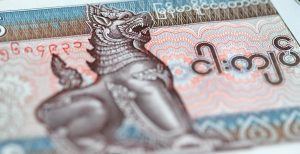As 2023 draws to a close, the findings of the latest World Bank report about Myanmar should come as no surprise, with inflation running at 28.6 percent over the year to June and the kyat collapsing by 18 percent against the U.S. dollar over the three months to September.
Life has only deteriorated further since the ethnic armed groups opposed to the military went on the attack in October. Rampant inflation and a currency collapse are a dreadful combination, more so in regards to the poor, and have worsened, which the World Bank describes as “a challenging backdrop.”
It notes that “more recently, armed conflict has escalated across the country, severely disrupting lives and livelihoods, blocking major transport routes and trade channels, and heightening uncertainty around the economic outlook.”
Moreover, “Economic conditions in Myanmar have deteriorated in the past six months, with the signs of recovery observed in the first half of 2023 proving to be fragile and short-lived.”
This report – like many of a similar ilk – treats the reality of living in Myanmar as simply a set of numbers in a macroeconomic equation as opposed to what they really stand for: a footnote for the gross human rights violations warranting prosecution by the international justice system.
The World Bank relies on the United Nations to background the impact of civil war which is then used to underscore the economic numbers, including the displacement of more than half a million people due to the escalation of the conflict since late October.
An additional 2 million people had already fled their homes and according to a year-end global overview from the U.N.’s Office for the Coordination of Humanitarian Affairs, more than 18 million people in Myanmar will need humanitarian assistance and protection going into 2024.
That’s close to a third of the population.
“Meanwhile, fiscal space remains constrained, with a widening deficit in large part financed directly by the central bank. Household incomes continue to be stretched by the cumulative impact of recent shocks,” the World Bank says.
“One coping mechanism that is becoming more common is migration. Outward flows have increased recently due to conflict, declining real incomes, and reduced economic opportunities.”
In stating the obvious, the World Bank found that key transport routes within Myanmar have been blocked, restricting the movement of people and trade of goods, leading to food shortages and other basic items in local markets.
“Armed clashes have disrupted vital trade routes, particularly in the northern Shan State, which is a major hub for border trade with China,” it said, adding: “Operations at several border crossings with Thailand and India have also been disrupted.”
“This has implications for Myanmar’s international trade across land borders, which accounted for 40 percent of its exports and 21 percent of its imports in the six months to September 2023.”
Despite the poor outlook, the report, titled “Challenges and Conflict,” seems to legitimize a junta that ousted an elected government on February 1, 2021, sparking a tragic civil war with many in the U.N. system calling for the Southeast Asian country to be reclassified as a failed state.
It notes the lack of economic success by the military saying “interventions to encourage foreign currency inflows and regulate exchange rates have generally been ineffective in restoring stability, while exacerbating uncertainty and market distortions.”
It also has some advice, saying Myanmar’s garment industry has “significant potential to act as a driver of growth in employment, labor productivity, and incomes,” by following the path of several other East Asian countries.
“Garment sector employment, productivity, and wages remain relatively low compared with international peers, despite fast growth over the past decade,” it says, adding the industry has substantial potential as a driver of economic development in Myanmar.
As one would expect, “Challenges and Conflict” is a dry summary of a country in peril. Another important point is that the World Bank relies on its member countries, including Myanmar, to provide the bulk of the data used when compiling its forecasts.
That means this report is little more than a damp squib. Nevertheless, it still provides worthy footnotes for a country gone horribly wrong.

































